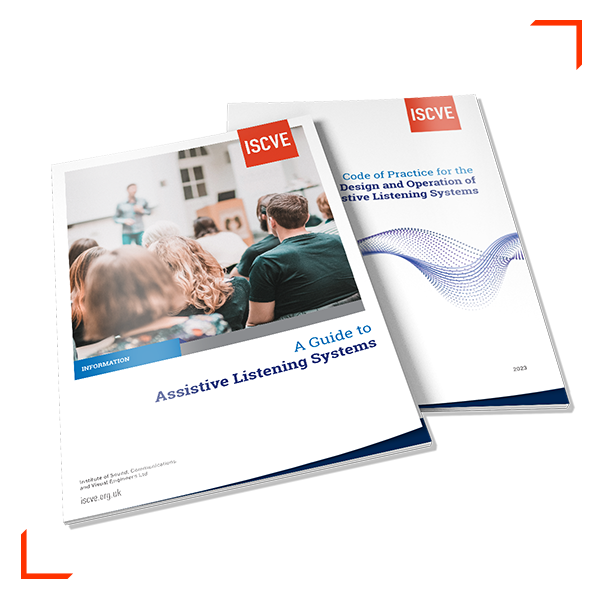A Guide and a Code of Practice for Assistive Listening Systems
Hearing loss affects approximately 12 million people in the UK and is often termed the ‘hidden disability’ as it may not be immediately obvious. Even with hearing aids speech from more than about 2 metres away can be difficult to understand.
An assistive listening system (ALS) can help make up for this shortfall by eliminating the acoustic space and its associated noise and reverberation, and bringing the wanted speech or sound directly to the ear or hearing device of the listener.
Intelligible Messaging for All
This Guide and Code of Practice have been published by the ISCVE to help venue managers, installation companies and users of Assistive Listening Systems.
Best Practices
They provide basic guidance concerning the audio performance and also introduce best practice considerations with respect to the design, operation, maintenance and accessibility of such systems.
These documents apply to all area coverage or service point Assistive Listening Systems used for communication, entertainment or educational purposes in public, private or domestic installations and public transport.


Download Your Copies Here
This Guide and a Code of Practice for Assistive Listening Systems have been produced by the ISCVE to help venue managers, installation companies and users of Assistive Listening Systems.
All you need to do is enter your email address and click ‘Submit’ and we’ll send you a copy of the ISCVE Assistive Listening Systems Guide and the ISCVE Code of Practice for Assistive Listening Systems automatically by email.
ISCVE Skills Training
ISCVE offers a series of Skills courses designed to cover a range of applications including Audio-Visual Skills, Core Skills, Voice Alarm Skills and more. Find out more here;





